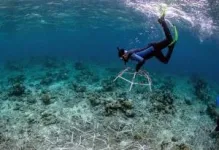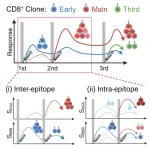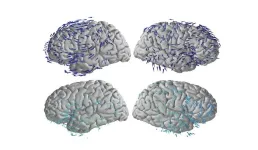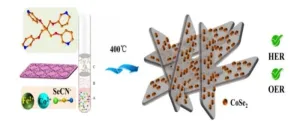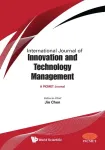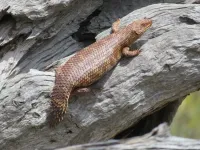(Press-News.org) Scope
For decades, robotic systems have played a pivotal role in nurturing the growth of tissue-engineered constructs in controlled environments through the provision of mechanical stimulation. The importance of physical stresses in tissue maturation is not only intuitive from our own bodily experiences but is also supported by a growing body of mechanotransduction research. However, experimental studies have predominantly remained confined to basic in vitro setups, hampering our ability to produce functional grafts that can translate into clinical practice. Emerging evidence suggests that replicating physiological stresses more faithfully could further enhance the functionality of tissue constructs.
Recent advancements in robotics, including the development of soft robots and biomimetic robots, hold immense promise for pushing the boundaries of tissue engineering. These robotic systems can deliver realistic mechanical stimulation to grafts and implants, potentially expediting their clinical implementation while deepening our insights into biological tissues. In turn, advances in tissue engineering, such as through the development of smart scaffolds, multicellular models and bioreactors, are able to support the generation of biohybrid and biomimetic robots. These bioengineered robots may one day surpass the performance of existing robotic platforms in terms of energy efficiency, compliance, and responsiveness to external stimuli.
Consequently, the convergence of advanced robotics and tissue engineering is becoming increasingly vital. This Special Issue seeks to provide a platform for researchers to share their latest breakthroughs at the intersection of these two applied research domains. Topics encompass a wide range of subjects, including but not limited to:
Tissue engineering involving robotic components
Advanced robotics interacting with biological tissues
Biohybrid robots, biorobotics
Biomimetic robots
Bioactuation
Biosensors
Bioreactor
Mechanobiology
Medical soft robots
Actuated biomaterials
Micro and Nanorobotics
Guest Editors
Pierre-Alexis Mouthuy, University of Oxford, UK
Pierre-Alexis Mouthuy is an Associate Professor at the Botnar Institute for Musculoskeletal Sciences, University of Oxford. He graduated as a bioengineer from the Catholic University of Louvain (Belgium) and completed his DPhil in tissue engineering at the Engineering Science Department in Oxford. He was a recipient of the European Marie Skłodowska-Curie Individual Fellowship, which he carried out at the Rudjer Bosković Institute (Croatia). His research group, established in 2018, focuses on the development of various soft tissue engineering strategies, including biomimetic materials and dynamic bioreactors using advanced robotic systems
Dana Damian, University of Sheffield, UK
Dana D. Damian is a Lecturer (Assistant Professor) in the Department of Automatic Control and System Engineering at the University of Sheffield. She received her PhD from the University of Zurich in 2012. She was a visiting scholar at Johns Hopkins University, Stanford University, and Carnegie Mellon University (2011/2013). She was a postdoctoral research fellow at Boston Children's Hospital, Harvard Medical School before joining University of Sheffield. She leads the Sheffield Biomedical Robotics Laboratory where her group's mission is to develop bionic and implantable devices that show life-like behavior and sustain operation for long-term therapies, in order to advance surgical treatments and regenerative medicine. Her research has been supported by EPSRC, UKRI, MRC and SNSF.
Submission Deadline:
August 31, 2024
Submit Manuscript:
https://www2.cloud.editorialmanager.com/cbsystems/default2.aspx
END
Call for papers| Special Issue on advanced robotics and tissue engineering
2024-03-08
ELSE PRESS RELEASES FROM THIS DATE:
Optimizing boosters: How COVID mRNA vaccines reshape immune memory after each dose
2024-03-08
mRNA vaccines developed against the spike glycoprotein of severe acute respiratory syndrome type 2 coronavirus (SARS-CoV-2), displayed remarkable efficiency in combating coronavirus 19 (COVID-19). These vaccines work by triggering both cellular and humoral immune responses against the spike protein of the virus. Cellular immunity may play a more protective role than humoral immunity to variants of concerns (VOC) against SARS-CoV-2, as it targets the conserved regions of spike protein and possibly cross-reacts with other variants.
Since a single spike epitope is recognized by multiple T-cell clones, the ...
Mapping the future’s sweet spot for clean energy and biodiversity
2024-03-08
Climate change is driving both the loss of biodiversity and the need for clean, renewable energy. It is also shifting where species are expected to live in the future. Yet these realities are rarely considered together. Where can clean energy projects be built without impacting the future habitat ranges of threatened and endangered species?
A study from the University of California, Davis, examines this question by overlaying renewable energy siting maps with the ranges of two species in the southwestern United States: the iconic and climate-vulnerable ...
Brain waves travel in one direction when memories are made and the opposite when recalled
2024-03-08
In the space of just a few seconds, a person walking down a city block might check their phone, yawn, worry about making rent, and adjust their path to avoid a puddle. The smell from a food cart could suddenly conjure a memory from childhood, or they could notice a rat eating a slice of pizza and store the image as a new memory.
For most people, shifting through behaviors quickly and seamlessly is a mundane part of everyday life.
For neuroscientists, it’s one of the brain’s most remarkable capabilities. That’s because different activities require the brain to use different combinations of its many regions and billions of neurons. How ...
Lack of focus doesn’t equal lack of intelligence — it’s proof of an intricate brain
2024-03-08
By Gretchen Schrafft, Science Communications Specialist, Robert J. & Nancy D. Carney Institute for Brain Science
PROVIDENCE, R.I. [Brown University] — Imagine a busy restaurant: dishes clattering, music playing, people talking loudly over one another. It’s a wonder that anyone in that kind of environment can focus enough to have a conversation. A new study by researchers at Brown University’s Carney Institute for Brain Science provides some of the most detailed insights yet into the brain mechanisms that help people pay attention amid such distraction, as well as what’s ...
Many type 2 diabetes patients lack potentially life-saving knowledge about their disease
2024-03-08
The body's inability to produce enough insulin or use it effectively often results in type 2 diabetes (T2D), a chronic disease affecting hundreds of millions of people around the globe. Disease management is crucial to avoid negative long-term outcomes, such as limb amputation or heart disease. To counteract adverse consequences, it is crucial that patients have good knowledge about the day-to-day management of the disease.
A team of researchers in Portugal has now assessed how many patients – both insulin-treated and not insulin-treated – have this crucial knowledge about T2D. They published their findings in Frontiers in Public Health.
“Our main motivation ...
Small class sizes not better for pupils’ grades or resilience, says study
2024-03-08
Smaller class sizes in schools are failing to increase the resilience of children from low-income families, according to a study published in the peer-reviewed International Journal of Science Education.
Data on more than 2,700 disadvantaged secondary (high) school students shows that minimizing pupil numbers in classrooms does not lead to better grades. Reducing class sizes could even decrease the odds of children achieving the best results, say the study authors.
The quantity of teachers also does not increase the odds of pupils from the poorest backgrounds achieving academically, despite concerns over staff shortages in schools.
Instead, the researchers ...
Two-dimensional bimetallic selenium-containing metal-organic frameworks and their calcinated derivatives as electrocatalysts for overall water splitting
2024-03-08
Transition metal selenides have been considered to be a good choice for electrocatalytic water splitting. In addition, Metal-organic frameworks (MOFs) have been used to make catalysts with good electrocatalytic capabilities. Traditionally, the MOF-derived selenides are produced via the self-sacrificing MOF template methods. However, this strategy is high-energy consuming, and it is difficult to precisely control the structure and component homogeneity of the product during pyrolysis.
A research group of Wang-ting Lu, Fan Yu, and Yun Zheng ...
An increase in the number of extreme cold days in North China during 2003–2012
2024-03-08
How extreme weather and climate events change is an intriguing issue in the context of global warming. As IPCC AR6 points out, cold extremes have become less frequent and less severe since the 1950s, mainly driven by human-induced climate change. However, cold extremes could also exhibit robust interdecadal changes at regional scale.
A recent study by researchers from the Institute of Atmospheric Physics, Chinese Academy of Sciences, presents robust interdecadal changes in the number of extreme cold days in winter over North China during 1989–2021, and the findings have been published in Atmospheric and Oceanic Science Letters. ...
Open creativity: Increased creativity due to network relationships
2024-03-08
This paper's objective is to show that the network of frequent relationships that is established between agents in coworking environments, through weak ties, increases the generation of ideas. Thus, the present work argues that collaborative spaces can expand individuals' creativity, as they constitute a social hub for exchanging experiences and visions between individuals from different social and professional backgrounds [Blagoev et al. (2019)]. Through frequent relationships and weak ties, these social connections allow individuals to access different levels of insights and inspirations that make it possible to ...
Reptile roadkill reveals new threat to endangered lizard species
2024-03-08
The chance sighting of a dead snake beside a sandy track in remote Western Australia, and the investigation of its stomach contents, has led Curtin University researchers to record the first known instance of a spotted mulga snake consuming a pygmy spiny-tailed skink, raising concerns for a similar-looking, endangered lizard species.
Lead researcher Dr Holly Bradley from Curtin’s School of Molecular and Life Sciences said the discovery of the partially digested pygmy spiny-tailed skink within the snake had implications for the vulnerable western spiny-tailed skink species.
“Found about 300km east ...

